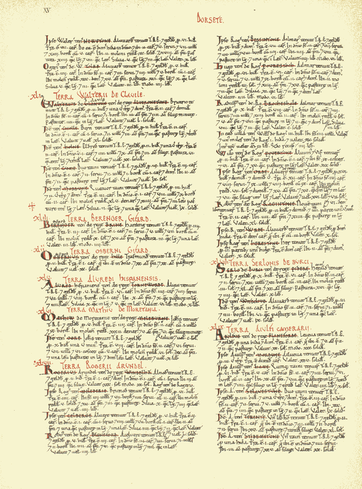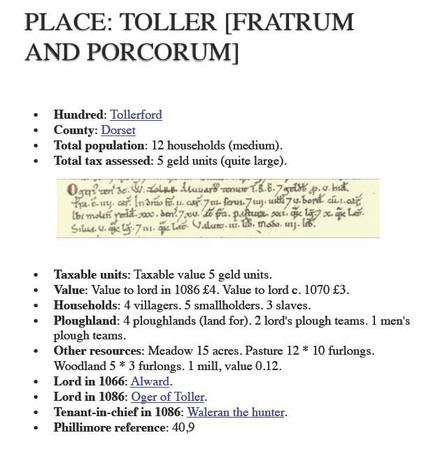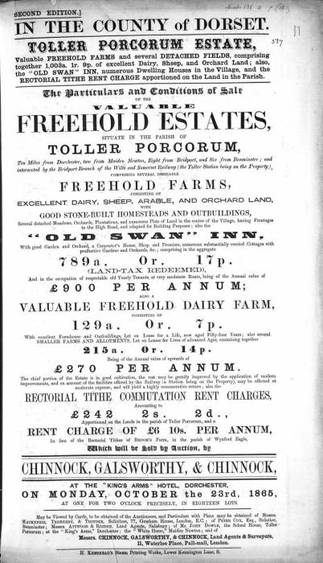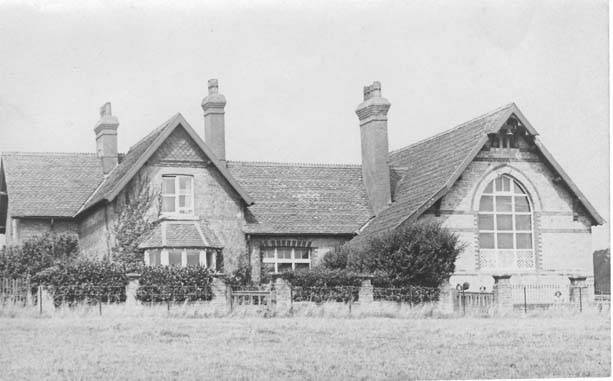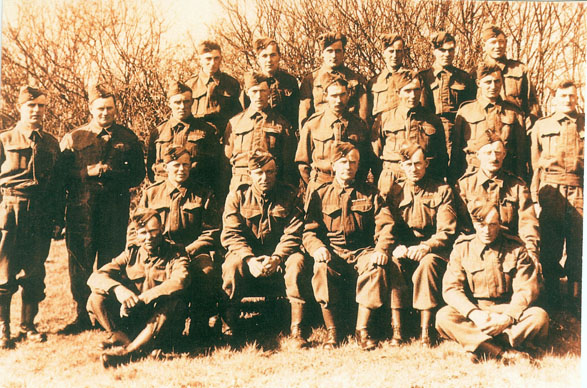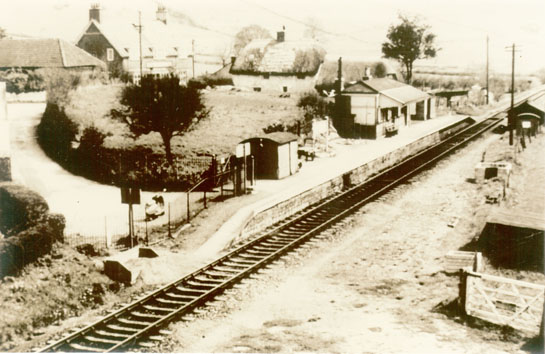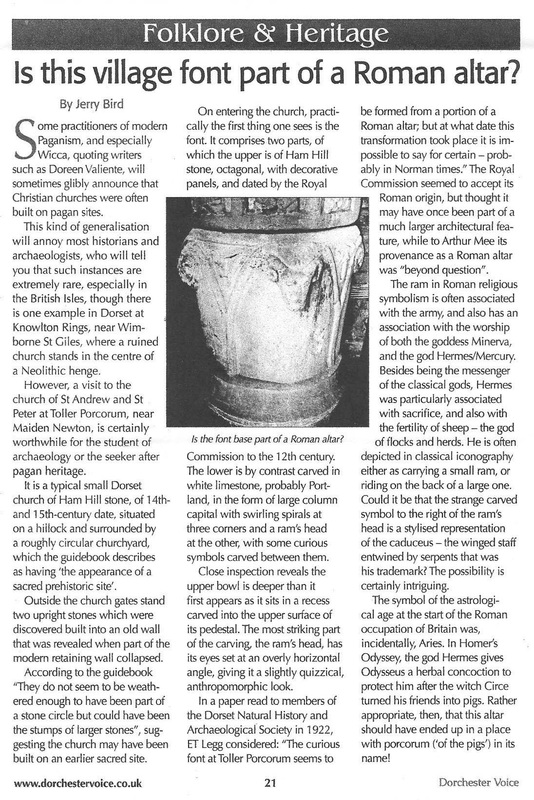Local History
written and researched by Tim Goodwin
Ancient History
The name Toller comes from the old name of the river (possibly named after a daughter of the Saxon king Ethelred the Unready who reigned 978-1016), and is also seen in Toller Down, Toller Whelme, Toller Fratrum, and Tollerford, meaning river in a steep valley. The river name seems to have been changed to the Hooke around the 15th century. 'Porcorum' is Latin for 'of the pigs', and either comes from the large number of pigs that were once farmed here in earlier days, or possibly from the presence in the area of wild boar, which were hunted by King John around Powerstock forest. The village has also been known as Swynestolre, Hog Toller, and Great Toller (compared with Little Toller - Toller Fratrum). The escape of some wild boar from one of the local farms a few years ago did result in the return of wild boar to Toller Porcorum, and they were even proved to have bred in the wild, but sightings have been less frequent recently. The hillside above the village shows many examples of strip lynchets, the borders of old Celtic fields, but the area has clearly been occupied far longer, for example a polished flint axe was found in the village in 1996, and the chalk pit on Whitesheet Hill was found to have been used for pre-Roman burials. To the south-west is the large Iron Age hill fort of Eggardon Hill, which was probably captured by the Romans during their invasion of 43AD. On each ridge, north and south of the village, are Roman roads. There have been stories of ghost legions seen marching along the Eggardon-Dorchester road, which prove an interesting contrast with UFOs which were apparently seen in the same place by an ex-Battle of Britain pilot some 40 years ago. Certainly there are still inhabitants of Toller who are reluctant to drive past Eggardon Hill at night!
Medieval Toller
Toller is mentioned in the Domesday Book (1087) as having been owned by Oger from a French lord named Waleran Hunter, who held a variety of villages in the county, including Maiden Newton. It consisted of land for four ploughs, and the lord also owned 3 slaves. There was a mill and a mixture of pastureland and woodland, and the whole was worth £4 (having been valued at £3 twenty years earlier) The village then disappears into near-total obscurity until the 13th century when King John (of Magna Carta fame) hunted regularly in Powerstock Forest - and as he stayed in Maiden Newton, he must certainly have ridden through Toller Porcorum on many occasions. Indeed John and the ill-fated Charles I seem to have been the only English kings to have visited our village. Next comes the first record of a parish priest, in 1235, though certainly local priests would have served the village for several centuries before that. The list of names of Rectors and Vicars of Toller starts in 1317, and continues to the present day, except for a gap between 1569 and 1615.
Astonishingly in 1303 Swine Toller was apparently held by John de Ingham, who was a direct descendant of the Waleran of the Domesday Book. The Lay Subsidy roll of 1327 lists the names of 17 inhabitants of Toller Porcorum, and the subsidy roll of 1332 increases the list to 21, though these of course were only the richest men in the village. Fourteen years later a certain Tom Bridgewater was given a license to make a chantry in the chapel of St Andrew in Swine Toller, but another deed says that the church was dedicated to St Peter, so we now use both dedications. The Black Death must have hit Toller very soon after its arrival in England (in Weymouth in 1348 just before the feast of St John the Baptist - 7 April), and the parish priest died of the disease, as did the priest of nearby Hooke. The Black Death carried away around one third of the entire population of England, and there is no reason to think that Toller was spared such a catastrophe. In 1361 the rectory and living of Toller were appropriated by the Abbey of Abbotsbury, which held it for two centuries, and it was the monks that Latinized the village's name to Toller Porcorum. The village meanwhile has passed from one lord to another, including Henry Duke of Lancaster in the 13th century, and John Earl of Arundel and Matilda Countess of Arundel in the 15th century. In 1462 Toller was handed over by the new king, Edward IV to his brother, George of Clarence (famous for having been mysteriously drowned in a butt of malmsey wine), though part of it must have remained in the Fitzalan family until the mid-16th century, when it was bought by John Samways. Archaeological excavations by Bournemouth University found traces of medieval habitation in several local fields.
Toller Porcorum 1500-1900
The 16th century was one of massive religious change, and in 1552 Protestant Royal Commissioners visited parishes throughout the land, including Toller Porcorum, confiscating their treasures - which were tainted with Catholicism - and leaving only a bare minimum of plate, cloths arid vestments for the churches to use.
This is what they found in Toller:
i challyce of Sylver gylt. ii surplices five payre of vestments iii Table clothes. ii of them Manched Sarsenet i corporas & ii carchyffes i of read saye ii candelsickes of bras. i of whytfustion ii Towelles. i of grene Satten of brydges. ii crueties of tyn. ii of purpull velvet. i lyche bell. ii copes iii sacrynge belles. i of purpull velvet. iiii belles in the tower. i of Dornex. i cross of lattyn.
to the use of the Church - App by the saide Commysioners
i challis of silver. i cope of Dornex, with all the Table clothes & surplices.
The resydewe of all the premises to the custody and charge of thes men. Whose names bee undre written. Sir David barry Vicar William Younge Thomas Buckler William Swett Richard bylke Renold Cole Robert Simon
So there must have been plenty of money to be made from the switch to Protestantism, if so much could be taken from a small village church. The religious conflicts of the time are also briefly reflected by a record of 1598, when Queen Elizabeth had seized two-thirds of the land of William Moorcock in Toller, because he was a Roman Catholic.
The local court records for the early 17th century include several cases against inhabitants of the village for keeping an alehouse without a license, one case of suspected infanticide by the grandmother of the murdered baby, and another case of sheep-stealing. Then in 1640 the local grandees agreed to divide up and enclose the common land of Toller Porcorum, which must have made life harder for the majority of the villagers.
In 1641-2 almost the entire adult male population of England signed the Protestation, swearing to defend the Protestant religion, and the rights of liberties of Parliament and individuals. The Toller list had 133 signatories, including many names that can still be found in the area today, such as Biles, Cornick, Galpin, Legg, Munden, Samways, Snooke and Symes - together with one that became famous many years later and many miles distant: Presley! Toller's place in the civil war seems to have been small, although King Charles I's army marched through the parish in 1644, and a civil war era sword has been found on one of the farms near Kingcombe, where the royalist army bivouacked for the night of 2 October. Rural west Dorset was largely sympathetic to the King but unlike its near neighbour Powerstock, Toller Porcorum supplied very few royalist soldiers or supporters - with only one name picked out in 1655 and another in 1662.There is no evidence of any Parliamentarians at all, though nearby Wynford Eagle was the home of the celebrated Sydenham family, which included William Sydenham, one of CromweIl's companions-in-arms and an important figure,in the Commonwealth, and the great republican doctor, Thomas Sydenham.
Despite the lack of information about Toller in the Civil War, it may be that it was hard hit, for while the Protestation returns of 1642 imply a population of over 300, the Dorset Hearth Tax assessments just 22 years later list the village as having 47 houses, and therefore a population of only around 190-200. The rapid decline seems to have continued, for in 1673 it was down to 44 houses, of which over three-quarters were exempt from taxation, demonstrating very serious poverty. Eight years later a collection was made for the poor of Great Toller who had suffered from “a devouring fire”. It is thought that Railway Cottage, recently renovated, was built just after this fire.
The 18th century passed quietly for the village. In 1762 Toller came into the ownership of George Browne of Frampton (a descendant of one of King Charles I's judges), whose charity is remembered inside the church, while in the 1780s and 1790s we know that John Cornick, Henry and Nicholas Galpin, John Goodwin, George Legg and Joseph Yeates all paid 'composition money' to avoid having to work on repairing the local roads - a back-breaking job which was done by raking up flints and breaking the large stones with a hammer. The local children were also used to pick stones.
In 1801, with the first modern census, we know that the population of Toller Porcorum parish was 340, and rising. Thirty years later, Toller had 18 registered voters out of over 400 inhabitants and in that year 11 voted against electoral reform, while the other 7 were not permitted to use their vote. In common with much of rural Dorset, the population of Toller peaked in 1841 - at an impressive 561 - from which time it has declined fairly steadily.
This is what they found in Toller:
i challyce of Sylver gylt. ii surplices five payre of vestments iii Table clothes. ii of them Manched Sarsenet i corporas & ii carchyffes i of read saye ii candelsickes of bras. i of whytfustion ii Towelles. i of grene Satten of brydges. ii crueties of tyn. ii of purpull velvet. i lyche bell. ii copes iii sacrynge belles. i of purpull velvet. iiii belles in the tower. i of Dornex. i cross of lattyn.
to the use of the Church - App by the saide Commysioners
i challis of silver. i cope of Dornex, with all the Table clothes & surplices.
The resydewe of all the premises to the custody and charge of thes men. Whose names bee undre written. Sir David barry Vicar William Younge Thomas Buckler William Swett Richard bylke Renold Cole Robert Simon
So there must have been plenty of money to be made from the switch to Protestantism, if so much could be taken from a small village church. The religious conflicts of the time are also briefly reflected by a record of 1598, when Queen Elizabeth had seized two-thirds of the land of William Moorcock in Toller, because he was a Roman Catholic.
The local court records for the early 17th century include several cases against inhabitants of the village for keeping an alehouse without a license, one case of suspected infanticide by the grandmother of the murdered baby, and another case of sheep-stealing. Then in 1640 the local grandees agreed to divide up and enclose the common land of Toller Porcorum, which must have made life harder for the majority of the villagers.
In 1641-2 almost the entire adult male population of England signed the Protestation, swearing to defend the Protestant religion, and the rights of liberties of Parliament and individuals. The Toller list had 133 signatories, including many names that can still be found in the area today, such as Biles, Cornick, Galpin, Legg, Munden, Samways, Snooke and Symes - together with one that became famous many years later and many miles distant: Presley! Toller's place in the civil war seems to have been small, although King Charles I's army marched through the parish in 1644, and a civil war era sword has been found on one of the farms near Kingcombe, where the royalist army bivouacked for the night of 2 October. Rural west Dorset was largely sympathetic to the King but unlike its near neighbour Powerstock, Toller Porcorum supplied very few royalist soldiers or supporters - with only one name picked out in 1655 and another in 1662.There is no evidence of any Parliamentarians at all, though nearby Wynford Eagle was the home of the celebrated Sydenham family, which included William Sydenham, one of CromweIl's companions-in-arms and an important figure,in the Commonwealth, and the great republican doctor, Thomas Sydenham.
Despite the lack of information about Toller in the Civil War, it may be that it was hard hit, for while the Protestation returns of 1642 imply a population of over 300, the Dorset Hearth Tax assessments just 22 years later list the village as having 47 houses, and therefore a population of only around 190-200. The rapid decline seems to have continued, for in 1673 it was down to 44 houses, of which over three-quarters were exempt from taxation, demonstrating very serious poverty. Eight years later a collection was made for the poor of Great Toller who had suffered from “a devouring fire”. It is thought that Railway Cottage, recently renovated, was built just after this fire.
The 18th century passed quietly for the village. In 1762 Toller came into the ownership of George Browne of Frampton (a descendant of one of King Charles I's judges), whose charity is remembered inside the church, while in the 1780s and 1790s we know that John Cornick, Henry and Nicholas Galpin, John Goodwin, George Legg and Joseph Yeates all paid 'composition money' to avoid having to work on repairing the local roads - a back-breaking job which was done by raking up flints and breaking the large stones with a hammer. The local children were also used to pick stones.
In 1801, with the first modern census, we know that the population of Toller Porcorum parish was 340, and rising. Thirty years later, Toller had 18 registered voters out of over 400 inhabitants and in that year 11 voted against electoral reform, while the other 7 were not permitted to use their vote. In common with much of rural Dorset, the population of Toller peaked in 1841 - at an impressive 561 - from which time it has declined fairly steadily.
The first school we know of in the village was founded by George Browne in 1772, and the master was ordered to teach the poor children of Toller Porcorum (together with some from nearby parishes), in reading, writing, arithmetic and the church catechism. The old schoolhouse is on the High Street, just by the old railway bridge. The village school moved in 1875, and the final schoolhouse is at the far end of School Lane.
The Maiden Newton to Bridport railway branch line opened in 1857 and went through Toller Porcorum but there was no station there. It wasn’t until 31st March 1862 that the village appeared on the local train timetable. This proved a great advantage for the village, and the farmers were able to use the line to send butter and Dorset Blue cheese to London, while wood products were also carried on the railway from the Toller saw mill owned by the Galpin family, who had formerly built wagons and coaches.
A rather mysterious Victorian nursery rhyme is about Toller:
“Don, two, dree, vour
Bells of Girt Toller
Who'can meake panceake
'thout fat or vlour?
Gargy, pargy, how s yer wife?
Very bad, upon my life,
Can she ait a bit o' pie?
Ees, sa well as you or I.
Zee, zaw, Margery Daw
Swold her bed and laid in straw.
Wadden she a dirty slut,
Da zell her bed and lay in dirt?
Pon my life an' honner
As I was gowine to Toller,
I met a pig a 'thout a wig
Pon my life an' honner!”
“Don, two, dree, vour
Bells of Girt Toller
Who'can meake panceake
'thout fat or vlour?
Gargy, pargy, how s yer wife?
Very bad, upon my life,
Can she ait a bit o' pie?
Ees, sa well as you or I.
Zee, zaw, Margery Daw
Swold her bed and laid in straw.
Wadden she a dirty slut,
Da zell her bed and lay in dirt?
Pon my life an' honner
As I was gowine to Toller,
I met a pig a 'thout a wig
Pon my life an' honner!”
Toller Porcorum has never been much noticed by the famous, but at the end of the 19th century, the Georgian house opposite the entrance to the churchyard in School Lane became the home for several years of the celebrated Pre-Raphaelite painter, William Holman Hunt, and there is even a somewhat doubtful story that when he repainted his celebrated 'Light of the World', which was hung in St Paul's Cathedral, London, in 1904, he used the door of Toller Church as a model for the door on which Jesus is knocking.
The population, which in 1801 and 1901 was about 340 and peaked in 1841 at 543. By 1931 this declined to 330 and to 129 in 1971 falling to 96 in 1981! By 1991 this had risen to 140 and today there are again over 300 people living in the parish.
The population, which in 1801 and 1901 was about 340 and peaked in 1841 at 543. By 1931 this declined to 330 and to 129 in 1971 falling to 96 in 1981! By 1991 this had risen to 140 and today there are again over 300 people living in the parish.
Toller Porcorum since 1900
Toller Porcorum parish council had its first meeting in 1920, and in 1931 a village hall was built on the old vicarage orchard for less than £500, with much of the money raised from the Toller Fetes. It was a popular site for dances, concerts and amateur dramatics, and people from Powerstock and Maiden Newton used the train to go there. Nevertheless Toller Porcorum was still well behind the times. As late as 1939 there was only one tractor in the village, and virtually all the ploughing was still done by horses. Electricity did not reach the village until 1938 when Wessex Electric offered three lights and a plug to everyone who wanted them. The old corn mill, just off the Kingcombe Road, has long been closed, though just opposite it you can see the old furrowed water meadows, which were controlled with sluices and flooded during the winter months to improve the pasture and keep it frost-free for early grazing.
The school continued to flourish for many years, sometimes almost reaching 70 pupils aged between 5 and 14. Those who passed their examinations at 11 could go to grammar school in Bridport, taking the train every day, or ride by bicycle to Beaminster, but neither option was particularly common.
The war brought sudden change to the slow evolution of West Dorset country life. A variety of army units were stationed in Toller, notably the King's Own Scottish Borderers, the Royal Sussex, the Highland, and the Durham Light Infantry. The Royal Artillery had two heavy guns just outside the village, there was a company of Home Guard, and there were searchlights at the top of Toller Lane, and at Lower Kingcombe, where the Nissen hut can still be seen. In 1943 a lone German plane even blasted the roof off one of the houses on the High Street. People from outside the British Isles now began to arrive in Toller Porcorum for perhaps the first time - 1944 saw American Gls, preparing for D-Day, as regular attenders at the dances in the village hall, while in 1945 German POWs were used to work the fields.
The school continued to flourish for many years, sometimes almost reaching 70 pupils aged between 5 and 14. Those who passed their examinations at 11 could go to grammar school in Bridport, taking the train every day, or ride by bicycle to Beaminster, but neither option was particularly common.
The war brought sudden change to the slow evolution of West Dorset country life. A variety of army units were stationed in Toller, notably the King's Own Scottish Borderers, the Royal Sussex, the Highland, and the Durham Light Infantry. The Royal Artillery had two heavy guns just outside the village, there was a company of Home Guard, and there were searchlights at the top of Toller Lane, and at Lower Kingcombe, where the Nissen hut can still be seen. In 1943 a lone German plane even blasted the roof off one of the houses on the High Street. People from outside the British Isles now began to arrive in Toller Porcorum for perhaps the first time - 1944 saw American Gls, preparing for D-Day, as regular attenders at the dances in the village hall, while in 1945 German POWs were used to work the fields.
As with many other small villages, Toller suffered a steady reduction of amenities following the end of the Second World War. The school closed in 1980, and became a maintenance garage for some years, though it is now a private dwelling. Toller's children now usually attend Greenford Primary School in Maiden Newton, and then go to Beaminster Secondary School, seven miles away.
The Bridport branch railway line survived the cuts of the 1960s, but was closed down in 1975, and the saw mill that depended on it lasted only another 10 years. The railway station itself was removed and rebuilt on the Dart Valley Railway in Devon. Parts of the old railway track are now permissive paths, open to public access, and make a pleasant walk through the countryside
The Bridport branch railway line survived the cuts of the 1960s, but was closed down in 1975, and the saw mill that depended on it lasted only another 10 years. The railway station itself was removed and rebuilt on the Dart Valley Railway in Devon. Parts of the old railway track are now permissive paths, open to public access, and make a pleasant walk through the countryside
For a comprehensive history of the Bridport Branch Line through Toller along with many interesting pictures click on:
http://www.disused-stations.org.uk/t/toller/index.shtml
http://www.disused-stations.org.uk/t/toller/index.shtml
Several houses used to be shops - as you can still see in walking through the village - but by the 1980s there was only a single post office and general store left, and that closed in 1998. Fortunately a small sub post office (open Mon-Fri mornings only) was opened the following year.
The village pub was the Old Swan. The original picturesque thatched building burned down in 1903, and the present structure was built to replace it - the mosaic swan, high on its wall visible to all who drive down Toller Lane. The pub stayed open until 1998, when it closed within two weeks of the last village shop. It has remained unused ever since. Palmers Brewery, that owns the building, applied for planning permission to knock the pub down and build houses, but in 2000 after a public enquiry conducted in the village hall, and featuring intense involvement by many villagers, Palmers were refused permission for a change of use. The brewery has refused to sell the building as a public house, despite enquiries, and the building is now derelict.
Recent years have seen some encouraging signs of new life in the village. In 1987, after a nationwide appeal, the Dorset Trust for Nature Conservation bought about 350 acres of the Kingcombe Estate, which became famous as it had never had modern weedkillers or fertilizers used on it. It is now part of the well-known Kingcombe Meadows nature reserve, and close by is the Kingcombe Centre, where a wide variety of courses are held throughout the year. Around the same time there was extensive building of new houses in the village, notably in Church Mead, and the population grew significantly for the first time in 150 years. It is now around 300.
The village also put great effort into building a new village hall, and this was finally triumphantly opened in December 1997, having cost roughly 300 times as much as its 1930s predecessor - though like the previous hall, it too was built by a builder who lived in the village. The hall, as well as hosting the usual village activities, the local dramatic society, occasional film showings and a popular bowls team, is regularly used for professional performances brought in under the aegis of Dorset Artsreach. These have included touring theatre companies, comedy and live music that has ranged from traditional Bulgarian folk music to modem jazz and flamenco. In 2004, inspired by three 12-year-old boys who wanted somewhere to play and who went round the village collecting money, Toller raised £15,000 to buy a village playing field, close by the hall, where there are also pleasantly-sited picnic tables.
Toller Porcorum has inevitably seen huge changes in its long history, and it has become a very different place from what it was half a century ago. Now most of the people who live in Toller were not born here, and do not work here either. Nevertheless the heart of village life still remains very much focused on two things: agricultural pursuits, for it is still surrounded by working farms, several of which are now organic; and on the church, which is still the first sign of Toller that one can see approaching the village, and the last glimpse of it as you depart.
The village pub was the Old Swan. The original picturesque thatched building burned down in 1903, and the present structure was built to replace it - the mosaic swan, high on its wall visible to all who drive down Toller Lane. The pub stayed open until 1998, when it closed within two weeks of the last village shop. It has remained unused ever since. Palmers Brewery, that owns the building, applied for planning permission to knock the pub down and build houses, but in 2000 after a public enquiry conducted in the village hall, and featuring intense involvement by many villagers, Palmers were refused permission for a change of use. The brewery has refused to sell the building as a public house, despite enquiries, and the building is now derelict.
Recent years have seen some encouraging signs of new life in the village. In 1987, after a nationwide appeal, the Dorset Trust for Nature Conservation bought about 350 acres of the Kingcombe Estate, which became famous as it had never had modern weedkillers or fertilizers used on it. It is now part of the well-known Kingcombe Meadows nature reserve, and close by is the Kingcombe Centre, where a wide variety of courses are held throughout the year. Around the same time there was extensive building of new houses in the village, notably in Church Mead, and the population grew significantly for the first time in 150 years. It is now around 300.
The village also put great effort into building a new village hall, and this was finally triumphantly opened in December 1997, having cost roughly 300 times as much as its 1930s predecessor - though like the previous hall, it too was built by a builder who lived in the village. The hall, as well as hosting the usual village activities, the local dramatic society, occasional film showings and a popular bowls team, is regularly used for professional performances brought in under the aegis of Dorset Artsreach. These have included touring theatre companies, comedy and live music that has ranged from traditional Bulgarian folk music to modem jazz and flamenco. In 2004, inspired by three 12-year-old boys who wanted somewhere to play and who went round the village collecting money, Toller raised £15,000 to buy a village playing field, close by the hall, where there are also pleasantly-sited picnic tables.
Toller Porcorum has inevitably seen huge changes in its long history, and it has become a very different place from what it was half a century ago. Now most of the people who live in Toller were not born here, and do not work here either. Nevertheless the heart of village life still remains very much focused on two things: agricultural pursuits, for it is still surrounded by working farms, several of which are now organic; and on the church, which is still the first sign of Toller that one can see approaching the village, and the last glimpse of it as you depart.
Early Landlords
The Manor of Toller Porcorum was one of over thirty in Dorset, Hampshire and Wiltshire granted by William the Conqueror to his chief forester, Waleran the Huntsman, a reward for clearing and laying out the New Forest under the King’s direction.
In 1350-1 Toller Porcorum was held by Henry, first Duke of Lancaster and then by the Crown, with the Abbots of Abbotsbury as patrons, until the Dissolution, when it was purchased by John SAMWAYS of Dorchester. He died in 1585, to be succeeded by a son Robert and then his brother Bernard, aged 72, who died in1645, 96 years old. His two daughters and coheirs shared the lands, the younger, Elizabeth receiving Toller Porcorum and Toller Fratrum. Her husband Sir Francis FULFORD Knight, of Great Fulford in Devon thus held the manor of Toller Porcorum, which passed through four generations to a collateral line represented by John Fulford (died 1780) who sold Toller Porcorum to George BROWN (who founded the original school in 1774) of Frampton in 1762. The last of this family, Francis John Browne, MP (died 133) had no issue and left the manor to James FLEMING, a relative who in 1865 divided the estate into a number of lots that were put up for sale.
The purchasers of these were John William MONTAGO, 7th Earl of Sandwich; William Samuel BEST, 2nd Baron Wynford; Henry SYMONDS of Edgbaston; Thomas WALLBRIDGE and Henry YATES, both local men. Other estates that lay in the parish were freehold and once small manors: (a) Higher Kingcombe, two miles north west of Toller Porcorum village, once belonged to the MALTRAVERS of Hooke. In 1800, it was held by Thomas POPE of Corscombe; (b) Lower Kingcombe, a mile north west of the village was held by Pope’s younger son John.
The Popes family is first found locally in the late C17th, when Thomas Pope was a tenant farmer in Corscombe. The youngest of his four sons, Ezekiel (1673-1735), leased land in Toller Whelme from a wealthy local farmer, George RICHARDS, and married a local girl, Mary ALLEN in 1811. Their second son, Thomas (1721-97) moved to London and made his fortune. He returned to his native home and bought Frogmore Farm and land in the Kingscombes. In 1766 he married Elizabeth SNAYDON at Corscombe. His younger son John (died 1793) married Elizabeth NEAL at Stalbridge in 1798. Their seven children were born at Frogmore; the second son being John Allen POPE, who prospered as a farmer and purchased a farm and land at Sutton Poyntz, north east of Weymouth, This eventually led to his take-over of the Eldridge-Pope brewery in Dorchester, but that is another story.
In 1350-1 Toller Porcorum was held by Henry, first Duke of Lancaster and then by the Crown, with the Abbots of Abbotsbury as patrons, until the Dissolution, when it was purchased by John SAMWAYS of Dorchester. He died in 1585, to be succeeded by a son Robert and then his brother Bernard, aged 72, who died in1645, 96 years old. His two daughters and coheirs shared the lands, the younger, Elizabeth receiving Toller Porcorum and Toller Fratrum. Her husband Sir Francis FULFORD Knight, of Great Fulford in Devon thus held the manor of Toller Porcorum, which passed through four generations to a collateral line represented by John Fulford (died 1780) who sold Toller Porcorum to George BROWN (who founded the original school in 1774) of Frampton in 1762. The last of this family, Francis John Browne, MP (died 133) had no issue and left the manor to James FLEMING, a relative who in 1865 divided the estate into a number of lots that were put up for sale.
The purchasers of these were John William MONTAGO, 7th Earl of Sandwich; William Samuel BEST, 2nd Baron Wynford; Henry SYMONDS of Edgbaston; Thomas WALLBRIDGE and Henry YATES, both local men. Other estates that lay in the parish were freehold and once small manors: (a) Higher Kingcombe, two miles north west of Toller Porcorum village, once belonged to the MALTRAVERS of Hooke. In 1800, it was held by Thomas POPE of Corscombe; (b) Lower Kingcombe, a mile north west of the village was held by Pope’s younger son John.
The Popes family is first found locally in the late C17th, when Thomas Pope was a tenant farmer in Corscombe. The youngest of his four sons, Ezekiel (1673-1735), leased land in Toller Whelme from a wealthy local farmer, George RICHARDS, and married a local girl, Mary ALLEN in 1811. Their second son, Thomas (1721-97) moved to London and made his fortune. He returned to his native home and bought Frogmore Farm and land in the Kingscombes. In 1766 he married Elizabeth SNAYDON at Corscombe. His younger son John (died 1793) married Elizabeth NEAL at Stalbridge in 1798. Their seven children were born at Frogmore; the second son being John Allen POPE, who prospered as a farmer and purchased a farm and land at Sutton Poyntz, north east of Weymouth, This eventually led to his take-over of the Eldridge-Pope brewery in Dorchester, but that is another story.
